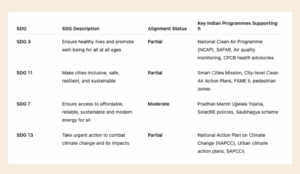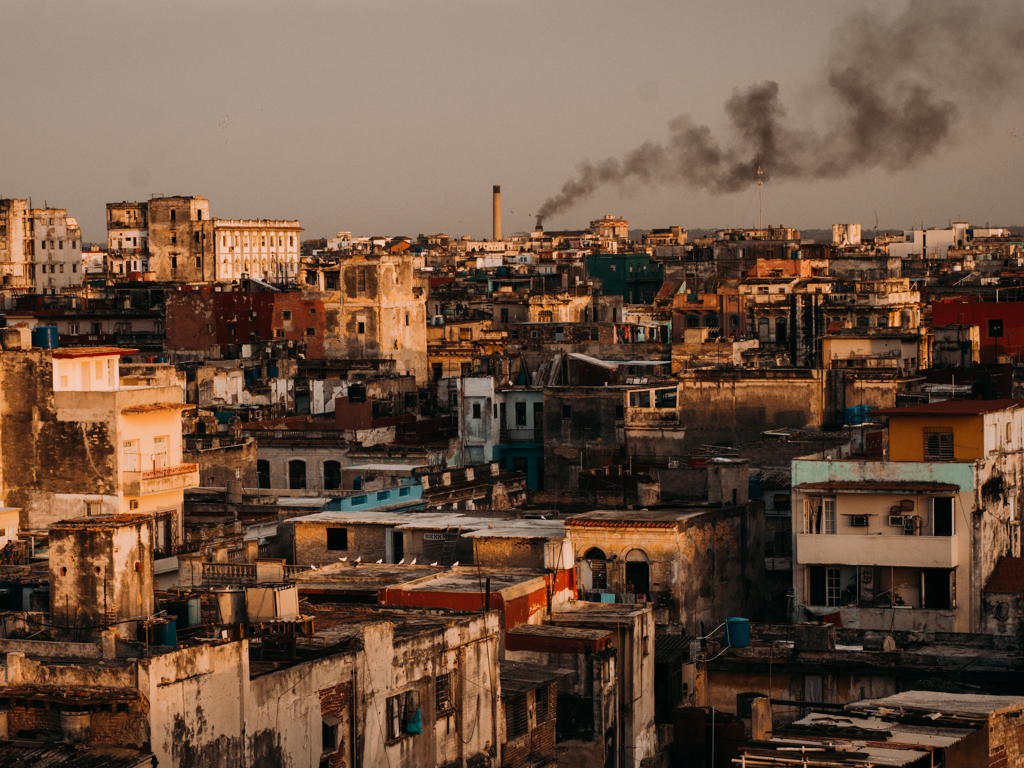In addition to the global frameworks, efforts at the national level play a substantial role in managing air quality/ pollution. In this context, let us try to understand how India is working towards improving its air quality and how it, as a country, has set up a structure to combat air pollution.
India aligns with several of the global air quality and environmental aims, and the depth and effectiveness of alignment vary. Broadly, it is understood that there are three major air quality aims among others that are globally followed, which are taken up by countries voluntarily and India aligns with some of them.
India’s alignment with WHO guidelines:
India’s air quality standards are much more lenient than WHO’s 2021 guidelines which for example targets PM2.5 Annual mean to be ≤ 5µg/m³ and PM10 annual mean to be ≤ 15 µg/m³, while India has set its own targets to be ≤ 40µg/m³ and ≤ 60µg/m³ respectively. However, gradual improvements through the National Clean Air Programme (NCAP) and city-level actions indicate that India is moving in the right direction. India, through its NCAP, targets a 40% reduction in PM2.5 and PM10 levels by 2026 (from 2017 levels). In the year 2019, it identified 131 cities as non-attainment cities on the basis of their consistent non-compliance with the National Ambient Air Quality Standards (NAAQS) and were mandated to prepare and implement city-specific action plans to improve air quality. India has also taken steps towards increased air quality monitoring efforts by expanding air quality monitoring stations and adoption of Continuous Ambient Air Quality Monitoring Systems (CAAQMS).
India’s alignment with the UN Sustainable Development Goals (SDGs):
India’s alignment with the SDGs related to air pollution is partial and evolving. Table below roughly shows its efforts and alignment:

India’s alignment with the Paris agreement:
India’s alignment with the Paris Agreement includes efforts that directly contribute to reducing air pollution, such as expanding renewable energy, promoting electric mobility, and improving energy efficiency. Through its Nationally Determined Contributions (NDCs), India is advancing clean energy transitions and sectoral actions that support both climate goals and better air quality. Several of these initiatives are already underway, with visible progress in renewable energy deployment, electric vehicle adoption, and implementation of the National Clean Air Programme.
While these are India’s alignments with the global standards, there is significant work and efforts from many states towards achieving the goals of NCAP. NCAP is currently seen as the country’s primary and most coordinated framework to address air pollution, as it represents a domestically driven, city-focused approach tailored to Indian conditions. It sets quantifiable reduction targets and works in a phased manner. It is also backed by central funding and technical support from Centre Pollution Control Board (CPCB) and State Pollution Control Board (SPCB).
Maharashtra, Tamil Nadu, Gujarat, Uttar Pradesh, West Bengal, Andhra Pradesh, among 20 other states and union territories, have initiated targeted interventions towards clean air. The 131 non-attainment cities in these 20 states have developed city-specific action plans and reflect the growing state-level commitment to cleaner air and healthier urban environments.
With global frameworks in place and India taking meaningful steps towards cleaner air, we now have an opportunity to turn this momentum into scalable, on-ground solutions that shape a healthier and more sustainable future.


